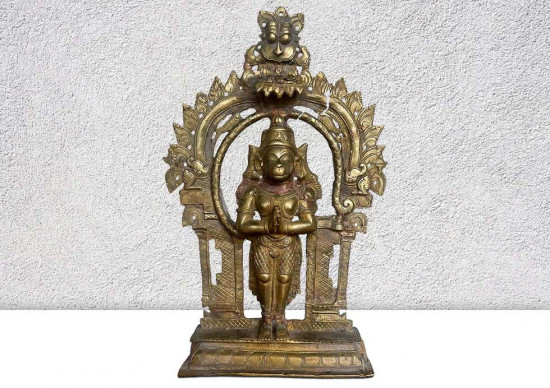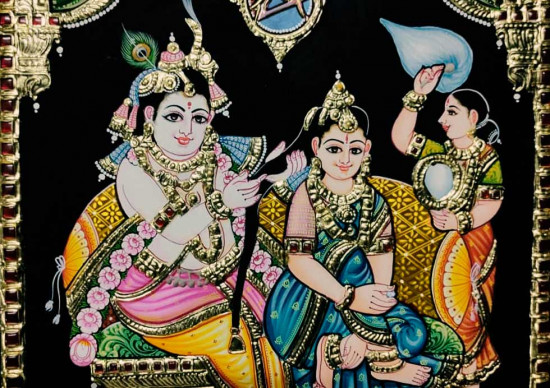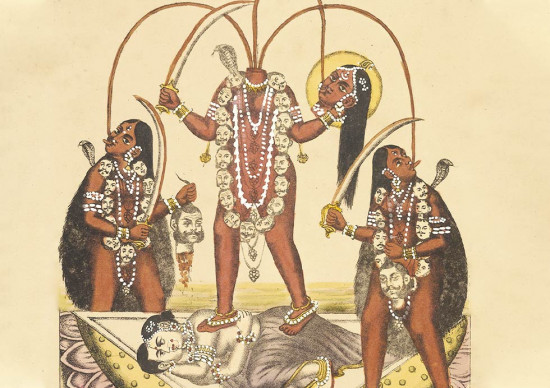
Since the child was born out of lotus, she was named Kamalawali by the king. Time came when Kamalawaldi fell in love with Vishnu in the form of Ranganadhar, the presiding deity of Sri Rangam Ranganathaswamy Temple the King Nanga Chola readily got her married to Ranganada who appeared here as the groom. Since Vishnu appeared as Aragya Manavalan, meaning a beautiful groom, the temple built here is called Aragya Manavalan temple. The event is celebrated as Turki Sevai festival every year. As per another legend, a fowl called Khori in Tamil and an elephant meant what is this place? With the fall victorious since the fall one, the place came to be known as Koriur. It has another name nicholhapuri.

The Divine Status of Azhagiya Manavalan Temple as a Divyadesham

Legend of Nachiyar's Marriage to Azhagiya Manavalar

As time passed, Kamalavalli fell deeply in love with Vishnu, who appeared in the form of Ranganatha, the presiding deity of the Srirangam Ranganathaswamy temple. The Chola king, in recognition of Kamalavalli’s devotion and love, arranged for her to be married to Ranganatha, who manifested as the groom. In this divine union, Vishnu took on the name Azhagiya Manavalan, meaning “beautiful groom.” The temple constructed to commemorate this union came to be known as the Azhagiya Manavalan Temple. This event is celebrated annually as the Serthi Sevai festival.
Another legend associated with the place tells of a battle between a fowl (referred to as “kozhi” in Tamil) and an elephant. In this unique conflict, the fowl emerged as the victor. As a result, the location became known as Kozhiyur. It is also sometimes referred to as Nichulapuri. The temple is believed to be the site where King Ravivarmaraja offered worship to the presiding deity.
History Of Aragiya Manavala Perumal Temple
The temple also participates in the Annadhanam scheme, which is a noble initiative that provides free meals to devotees. Under this scheme, the temple offers free food to a hundred devotees daily, and the entire expenditure is covered by contributions from devotees. This charitable act demonstrates the temple’s commitment to providing sustenance and nourishment to its visitors as a part of its religious and community service.
Architecture Of Azhagiya Manavala Perumal Temple
Adding to the temple’s uniqueness, a shrine dedicated to the goddess Kamalavalli Nachiyar faces North, a departure from the customary South-facing shrines of presiding goddesses in most other temples. Alongside, separate shrines honor revered saints Ramanuja and Nammalvar, emphasizing their significant role in the Vaishnavite tradition.

These artistic and architectural elements collectively enrich the temple’s spiritual and cultural significance, providing a space where devotion, history, and artistic expression harmoniously converge, inviting all to partake in its sacred ambiance.
Devotion and Celebration: Festivals and Rituals
The Azhagiya Manavalan Temple is known for its rich religious practices and vibrant festivals. Here are some of the key festivals and religious rituals observed at the temple:
- Daily Rituals: The temple priests perform daily rituals (pooja) six times a day. These rituals include alangaram (decoration), nivedhanam (food offering), and deepa aradanai (waving of lamps) for both Azhagiya Manavalan and Kamalavalli deities. During the last step of worship, traditional musical instruments like nagaswaram and tavil are played, Vedic hymns are recited by priests, and devotees prostrate themselves in front of the temple mast.
- Weekly, Monthly, and Fortnightly Rituals: The temple also has specific rituals that are performed on a weekly, monthly, and fortnightly basis, which are an integral part of its religious practices.
- Serthi Sevai: This annual homecoming festival is celebrated during the Ayilyam star in the Tamil month of Panguni. It is part of the Panguni Uthiram festival of the Srirangam Ranganathaswamy temple. During this festival, the idol of Namperumal from Srirangam temple is brought to the Nachiyar temple, and both deities are adorned in the Serthi hall of the temple. Special rituals and celebrations take place during this event.
- Other Major Festivals: The temple celebrates various other major festivals, including Dolostava, Vasanthothsava (spring festival), and Navaratri. These festivals are marked by special ceremonies, processions, and religious observances.
- Thiruppaan Alvar Birth Festival: The temple is believed to be the birthplace of Thiruppaan Alvar, one of the Alvar saints from the 6th-8th centuries. A yearly birth festival is celebrated in Srirangam Ranganthaswamy temple to honor Thiruppaan Alvar. The festive idol of Thiruppaan is taken from the Azhagiya Manavalan Temple to Srirangam. This occasion involves grand honours and various ceremonies, such as tying a silk turban, adorning with garlands, and applying sacred sandal paste to the Alvar. The festival includes chanting of Nalayira Divya Prabandham with the verses from Thiruppaan Alvar’s work, Amalanaathipiraan.
- Azhagiya Manavala Perumal Temple Festival: In the Azhagiya Manavala Perumal Temple, a 10-day festival is celebrated in parallel to the Thiruppaan Alvar Birth Festival. This festival includes Araiyar sevai (devotional singing), Veda Paaraayanam (recitation of Vedas), special thirumanjanam (ablution), and a grand procession inside the temple.
These festivals and religious practices play a significant role in the temple’s cultural and spiritual life, attracting devotees from far and wide to participate in the celebrations and seek blessings.









